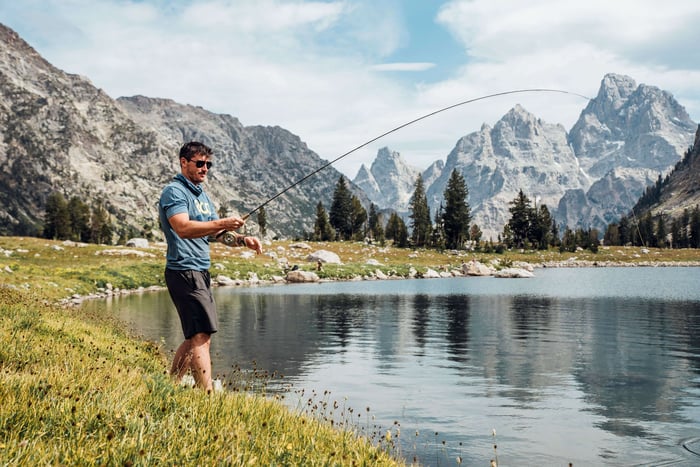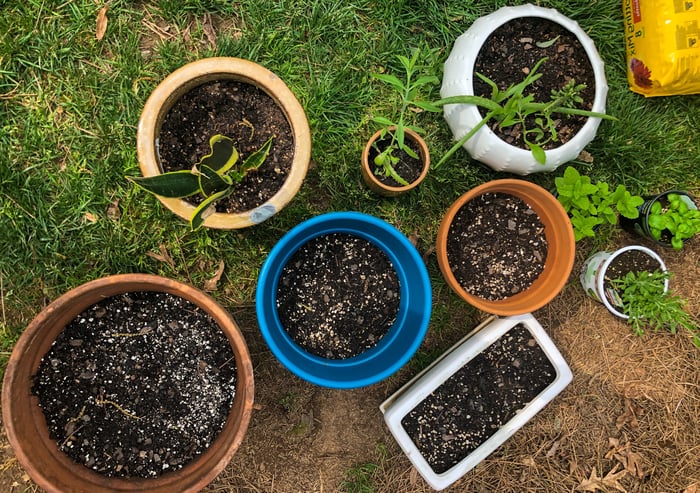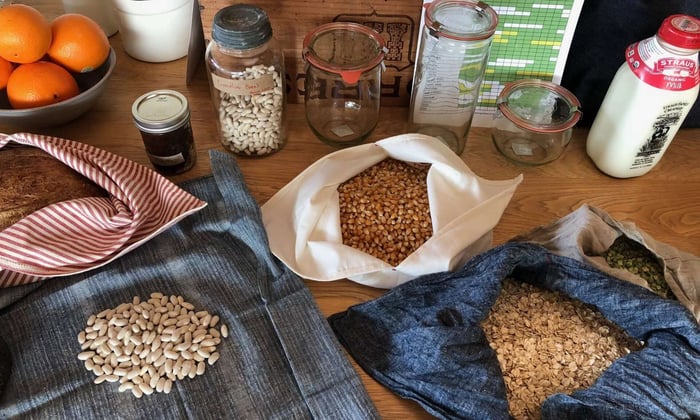Launched in 2017, Recover’s Protect Our Parks initiative was established to protect the places we love. It was created to spread awareness, promote engagement, and motivate action to protect and preserve our nation’s wild places. Every Protect Our Parks design is partnered with a cause. Check out our Protect Our Parks collection including the Original Protect Our Parks, National Parks, and I Heart Pisgah collections and these sustainability tips on Leaving No Trace in the Places You Love...

In 2018, the National Park Service reported over 318 million recorded recreational visitors to the parks, a number that has experienced rampant growth in the past decade. While it is exciting that more and more people are “gettin’ out there,” more and more, we are hearing stories of national parks and public lands being “loved to death.”
In enjoying the benefits and pure fun of spending time outside, here are some quick tips for leaving places better than you found them, and being mindful of our impact in the very special places in which we are lucky enough to spend time. The Leave No Trace Seven Principles are quick and easy tips and essentials for your daily, weekend, or longer vacay into the outdoors. Here they are:
“Adequate trip planning and preparation helps backcountry travelers accomplish trip goals safely and enjoyably, while simultaneously minimizing damage to the land. Poor planning often results in miserable campers and damage to natural and cultural resources. Rangers often tell stories of campers they have encountered who, because of poor planning and unexpected conditions, degrade backcountry resources and put themselves at risk.” -Leave No Trace
What This Means: Get information about the area you’re traveling to and plan accordingly… if it usually gets cold at night and can sometimes snow in June, bring warm clothes, if it can get really hot, bring adequate sun protection. If you’re planning a backpacking trip to a place with no trash disposal, pack your food and gear ahead of time and minimize packaging and potential microtrash. If you’re traveling through cultural sites, get information about what is respectful, and allow others to see and experience them. Research restrictions on group size, camping near water, where to go to the bathroom, and plan accordingly.
2. Travel & Camp on Durable Surfaces
“The goal of travel in the outdoors is to move through natural areas while avoiding damage to the land or waterways. Understanding how travel causes impacts is necessary to accomplish this goal. Travel damage occurs when surface vegetation or communities of organisms are trampled beyond recovery. The resulting barren area leads to soil erosion and the development of undesirable trails.” -Leave No Trace
What This Means: Travel on trails when possible and avoid cutting switchbacks in order to prevent erosion. Look up and/ or ask park service or other resources about where it is best to camp… if you are in desert areas, this may be on slickrock in order to avoid cryptobiotic soil breakdown, if you are around a lake, this may mean camping a certain distance from the lake, if you are at a high-use camping area, this may mean camping on designated platforms.
Leave No Trace “encourages outdoor enthusiasts to consider the impacts that they leave behind, which will undoubtedly affect other people, water and wildlife...Proper disposal of human waste is important to avoid pollution of water sources, avoid the negative implications of someone else finding it, minimize the possibility of spreading disease and maximize the rate of decomposition… For other forms of waste, ‘Pack it in, Pack it out’ is a familiar mantra to seasoned wildland visitors. Any user of recreation lands has a responsibility to clean up before he or she leaves. Inspect your campsite and rest areas for trash or spilled foods. Pack out all trash and garbage.” -Leave No Trace
What This Means: Exactly what it says. This Leave No Trace Link has detailed information on how to dispose of human waste and reminders on how to pack out other waste, such as garbage, and properly dispose of dishwater, etc. Carrying out food leftovers, bacon grease, etc. is crucial in order to avoid impacting animals, and carrying out trash such as plastic bags and wrappers is crucial. Do NOT burn your trash, as partially burned trash has negative environmental impacts to the area, the climate, and other visitors. Pack it out, and recycle when possible.
“Allow others a sense of discovery by leaving rocks, plants, archaeological artifacts and other objects of interest as you find them...Do not dig trenches for tents or construct lean-tos, tables, chairs or other rudimentary improvements… For high-impact sites, it is appropriate to clean up the site and dismantle inappropriate user-built facilities, such as multiple fire rings and constructed seats or tables… Avoid damaging live trees and plants (and)... leave natural objects and artifacts.” -Leave No Trace
What This Means: When visiting, adventuring, and camping places, do so in a way that leaves the place as wild as you found it. Don’t carve in trees or deplete vegetation. If you move anything to set up camp, such as rocks, put them back. Be familiar with area protocols for having and breaking down fires, and so that others can arrive at an area that feels wild and the environment can maintain its integrity, even with visitors passing through. If you find that you are travelling through heavily used areas that could use some love, leave them better than you found them- pick up trash, dismantle surplus fire rings, etc. If you are traveling to a cultural site, take photos of the area instead of objects.
“Fires vs. Stoves: The use of campfires, once a necessity for cooking and warmth, is steeped in history and tradition. Some people would not think of camping without a campfire. Campfire building is also an important skill for every camper. Yet, the natural appearance of many areas has been degraded by the overuse of fires and an increasing demand for firewood. The development of lightweight efficient camp stoves has encouraged a shift away from the traditional fire for cooking. Stoves have become essential equipment for minimum-impact camping. They are fast, flexible and eliminate firewood availability as a concern in campsite selection. Stoves operate in almost any weather condition—and they Leave No Trace.” -Leave No Trace
What This Means: Get info on where you are going, and if it’s appropriate, safe, and/ or an option to build a fire. Either way, consider using a stove for minimal impact. If you are in an area that allows for fire building, make sure to have your own firewood or only collect according to protocols such as “down and dry”, in a fire ring, or in a fire pan. For great tips on minimizing impacts of campfires, check out this Link.

“Learn about wildlife through quiet observation. Do not disturb wildlife or plants just for a ‘better look.’ Observe wildlife from a distance so they are not scared or forced to flee. Large groups often cause more damage to the environment and can disturb wildlife so keep your group small. If you have a larger group, divide into smaller groups if possible to minimize your impacts. Quick movements and loud noises are stressful to animals. Travel quietly and do not pursue, feed or force animals to flee. (One exception is in bear country where it is good to make a little noise so as not to startle the bears.) In hot or cold weather, disturbance can affect an animal’s ability to withstand the rigorous environment. Do not touch, get close to, feed or pick up wild animals. It is stressful to the animal, and it is possible that the animal may harbor rabies or other diseases.”- Leave No Trace
What This Means: Enjoy observing animals from afar and be respectful of their scene - remember that you are in their home. Refrain from the urge to get a selfie with an animal “just a little bit closer”, and instead enjoy being right there and seeing it for yourself. Make sure to clean up and contain food and garbage scraps, so as not to attract insects, pests, and animals or make them dependent upon human visitors for food.
7. Be Considerate of Other Visitors
“One of the most important components of outdoor ethics is to maintain courtesy toward other visitors. It helps everyone enjoy their outdoor experience. Many people come to the outdoors to listen to nature. Excessive noise, uncontrolled pets, and damaged surroundings take away from the natural appeal of the outdoors.” -Leave No Trace
What This Means: Many go to the outdoors to enjoy the wild, quiet, and solitude, while sometimes some may go to enjoy time with friends and family. No matter what, recognize that everyone is out there for an experience that brings us all back to the simplicity of breathing fresh air, being in beautiful places, and listening to the sounds of running rivers, and chirping birds instead of traffic or blaring sounds. Be respectful of other people that might be out there enjoying time on trails, in the mountains, and in the places we all love.
Launched in 2017, Recover’s Protect Our Parks initiative was established to protect the places we love through spreading awareness, promoting engagement, and motivating action.







